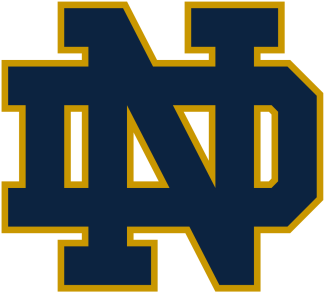We have covered bubble teams, seeded teams, the jockeying of bids from each conference, procedures and site assignments. Today, we address some of the biggest questions prior to the selection show.
Where Will Northwestern End Up?
This is an intriguing question because the Wildcats (14-0) are clearly very good, going undefeated in the Big Ten. Nevertheless, they have only played six other teams all season and weren’t seriously challenged for more than 30 minutes in any of them.
We have had Northwestern as high as No. 2 in our projections and as low as No. 4. This is where the Wildcats will land tonight. The committee will get latitude to place them where they see fit with some subjectivity. We’ve split the difference the past couple projections and still see that as such: North Carolina is a clear No. 1, then Syracuse and Boston College are just behind the Tar Heels. It could be justified to put those ACC teams 1-2-3, but it seems reasonable that Northwestern should be No. 2 or 3 and deserving of a first-round bye.
The Projected Seeds Don’t Match the Rankings
This is always the case. Objective criteria are used to rank every team under consideration for the final field. Let’s go over some discrepancies.
The first five of the Nike / US Lacrosse Top 20 are the same teams: North Carolina, Northwestern, Syracuse, Boston College and Notre Dame. After that, what the committee comes up with will differ greatly.
For example, Stony Brook is ranked sixth. The Seawolves might get a seed. They might not. We have them as No. 8. They only have one win over a projected NCAA team (Towson) as compared to teams like Florida (five such wins over Temple and Vanderbilt) and Maryland (four such wins over Johns Hopkins and Rutgers). Any of these three teams might get a seed.
Further up the list is Drexel. The Dragons have the fourth-best RPI, plus eight significant wins (those over teams ranked in the RPI Top 30), including Hofstra, Temple and Towson (three wins). We seed the Dragons seventh, but in the latest rankings before conference tournaments, they were ranked 10th.
Why Penn State over Ohio State?
Both teams finished 4-9, Ohio State beat Penn State twice and was seeded higher in its conference tournament. Ohio State should be in. Open and shut. Right?
Not so fast. There are five main data points for selection considerations: RPI, SOS, head-to-head, common opponents and significant wins/losses.
The RPI and SOS isn’t useful in this case (PSU is 73/41, OSU 76/43) because they played the same schedule. Head-to-head goes to Ohio State, but common opponents and significant wins goes to Penn State. The Nittany Lions went 4-7, while Ohio State was 2-9. Moreover, Penn State went 2-0 against Maryland (Ohio State was 0-2) and 1-1 against Rutgers (OSU was 0-2). The Buckeyes were 2-0 against Michigan, while PSU was 1-1.
One last thing to consider is this: If Penn State is not included in the field, Ohio State doesn’t have a win over an NCAA team. Penn State still has three wins against teams that will be in the field. Therefore, the Nittany Lions are projected in.
Geography and the Number of ACC, Big Ten, CAA and AAC Teams Will Create Unbalanced Pods
A great example of this is that in our S-Curve, the ACC and Big Ten have teams in the middle of it all, where they should play each other in the first round but procedurally they can’t. Same goes for the AAC and CAA higher and lower in that curve. As such, don’t be surprised to see a pod with a seed playing a mid-major team and two traditional powers squaring off in the first round. For a while, we’ve had Maryland and Duke (it could end up being Virginia) playing in Drexel’s seeded pod.
Note: First-place teams are listed as automatic qualifiers. In the event of a tie, the AQ goes to the highest rated team in the RPI. There are a total of 15 automatic qualifiers and 14 at-large teams to comprise a 29-team field. Significant wins include all teams in the RPI Top 30 and projected NCAA teams, significant losses are those RPI 31+. For the Big Ten and MAAC, we used significant wins as those over teams in the field and significant losses as those among the teams not being considered for at-large bids. All records are through May 2. * denotes Automatic Qualifiers.
Automatic Qualifiers (15)
|
RPI
|
SOS
|
T20
|
T21-40
|
Last 6
|
Sig. L
|
| North Carolina |
1 |
4 |
10-0 |
6-0 |
6-0 |
--- |
| Northwestern |
6 |
67 |
0-0 |
3-0 |
6-0 |
--- |
| Stony Brook |
7 |
21 |
1-2 |
5-0 |
6-0 |
--- |
| Loyola |
9 |
36 |
1-1 |
2-2 |
6-0 |
--- |
| UMass |
10 |
31 |
3-1 |
2-1 |
6-0 |
UConn (32) |
| Florida |
11 |
19 |
5-2 |
1-0 |
6-0 |
--- |
| Stanford |
12 |
94 |
0-0 |
6-0 |
6-0 |
--- |
| Denver |
13 |
51 |
0-0 |
5-1 |
6-0 |
--- |
| Jacksonville |
15 |
79 |
1-0 |
1-0 |
5-1 |
Coastal Carolina (42) |
| Fairfield |
18 |
72 |
1-1 |
1-0 |
6-0 |
Siena |
| James Madison |
21 |
29 |
2-2 |
3-2 |
6-0 |
--- |
| Mount St. Mary's |
24 |
69 |
0-0 |
2-2 |
6-0 |
--- |
| High Point |
37 |
28 |
0-4 |
0-2 |
5-1 |
--- |
| Robert Morris |
40 |
105 |
0-1 |
0-0 |
6-0 |
--- |
| Mercer |
61 |
60 |
0-3 |
0-2 |
3-3 |
4 Losses to Teams 31+ |
North Carolina will likely face a familiar foe in the second round as the No. 1 seed … Northwestern’s placement will be among the most interesting reveals. The Wildcats could be a No. 2 seed or at No. 4. We’ve split the difference at No. 3 … Stony Brook did nearly everything it could this season short of upsetting UNC or Syracuse. The Seawolves are on the fence to get a seed …
Loyola has won 11 straight and is in line to pick up a seed … UMass should expect to be placed in Boston College’s pod … Florida took care of business in the AAC tournament. The Gators may have done enough to garner a seed and hosting responsibilities. This would probably be assured if they hadn’t lost to Jacksonville …
Stanford will be one of three undefeated teams in the NCAA tournament. A likely first-round clash with Denver awaits in the first round, which will probably take place at either Northwestern or Notre Dame … Jacksonville avoided sweating out the show tonight by winning the ASUN championship …
Top-seeded Fairfield avenged its only loss in the MAAC championship win over Siena … James Madison turned the season around with six straight wins en route to the CAA title … Mount St. Mary’s staged a four-goal comeback and waited out a storm to defeat Wagner in the NEC title game …
High Point, the Big South winner, is projected to face No. 7 seed Loyola in Baltimore … Robert Morris went a perfect 9-0 in MAC play for its first conference crown. The Colonials haven’t lost since March 10 at Cincinnati … Mercer pulled off the upset and is the Southern Conference representative. The Bears are likely flying to Boston College or Northwestern to play the No. 4 seed.


























































